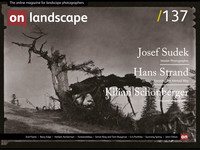The world’s first nature reserve

Herbert Ascherman
Herbert Ascherman is a landscape and portrait photographer known for his elegant platinum and silver gelatin prints. Herb has lectured worldwide, written for photography books, magazines and journals, is an amateur photography historian and an avid collector of photography books and Daguerreotypes of people with dogs.
The Forest of Fontainebleau (or Forêt de Bière, the "forest of heather") lies an easy jaunt of sixty kilometres south-east of Paris.
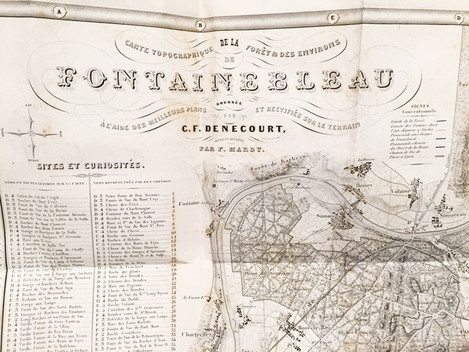
Widely promoted by the leading painter of the Barbizon school in the mid-nineteenth century Parisian Jean-Baptiste-Camille Corot, the forest of Fontainebleau famously attracted and inspired artist and photographers alike. Used both as a retreat and source of inspiration, Fontainebleau appeared as the subject matter in innumerable paintings and photographs that rendered visions of Forest’s elegance and simplicity. Artists sought to emphasise the importance of Nature, rather than subjugating her to background material in an animated scene.
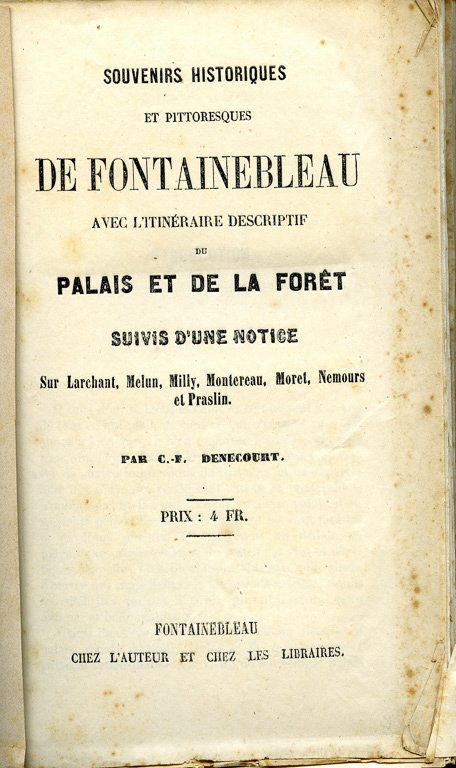
Claude François Denecourt ‘discovered’ the forest in 1832 at the age of 44 and subsequently dedicated the remaining years of his life to its preservation and promotion. Due largely to his entrepreneurial efforts, of the Forest at Fontainebleau, the village of Barbizon (for which the painter’s school was named) and the surrounding areas became a mecca for an estimated 700 painters and photographers throughout the mid-19th century.
To further attract and interest visiting artists, Denecourt remarkably named over 600 trees, 700 rocks, and numerous landmarks and points of view. Place names were often borrowed from mythology, contemporary and classic history and literature, which provided an opportunity for Denecourt to entertain visitors with stories, myths and legends, most of which he personally invented. Many of the caves, grottoes and ‘ancient’ structures were built under his aegis and locally licensed to food, beverage or souvenir purveyors. His efforts were directed at attracting visitors who would then purchase his traveller’s guide : L'indicateur de Fontainebleau : itinéraire descriptif du palais, de la forêt et des environs, (literally: Fontainebleau : places to visit, a guide and description of the palace, forest and surrounding environs) which was published in eleven editions from 1839 until his death in 1875.
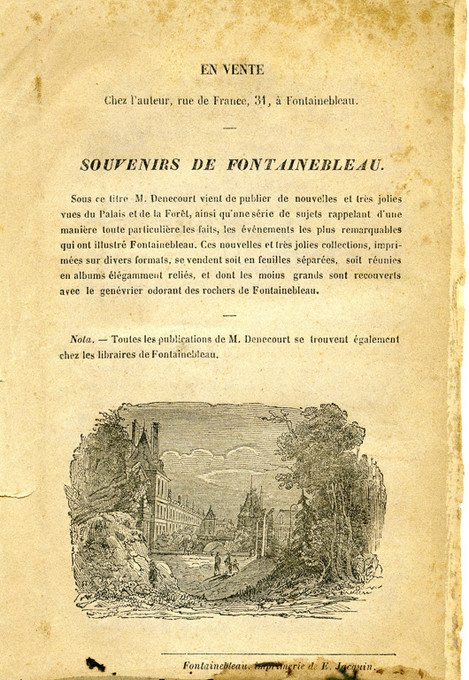
The success of Denecourt’s efforts came in 1849 with the arrival of the railway from Paris, allowing an easy one-day access for anyone with a free afternoon and a couple francs for carriage fare. Called the Sylvain de la Foret de Fontainebleau (literally the Forest Spirit of F…), Denecourt’s efforts resulted in Fontainebleau becoming the world’s first nature reserve in 1861, 11 years preceding the world’s second reserve, California’s fabled Yellowstone National Park.
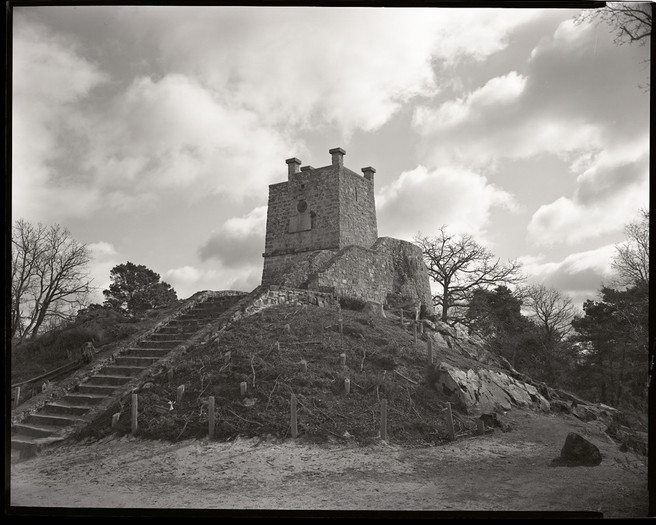
Widely lauded as one of the early pioneers of modern hiking, Denecourt personally carved 1100 kilometres of forest walking trails and about 300 kilometres of footpaths (called centiers in French) throughout the forest. Ancient photographic practitioners hauled their large and ungainly cameras along these wilderness paths to capture their version of the natural scene.
More recently, my images reference the work of the 19th-century photographers Baldus, Le Grey, Couvier, Le Secq, and Mestral among others. Printing in Platinum, a process patented in 1873 by England’s William Willis Jr., I seek to reproduce the vision and methodology of those early photographic pioneers.
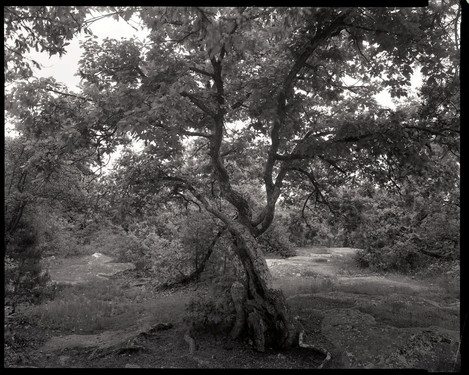
The scenes here presented appear exactly as they did to those who first captured these images more than 160 years ago. I know. I found their tripod marks.
Technically, I use a borrowed antique 8 x 10 Deardorff and 150 and 240mm lenses of uncertain lineage and ancient vintage belonging to a Parisian friend. An extra suitcase with a dozen 8 x 10 film holders and a Gitzo carbon fibre tripod is always part of my international luggage. Hand carrying several boxes of Ilford 100 HP4 through customs has thankfully never resulted in X-ray damage. Once home, the film is developed in PMK, proofed on Ilford Multigrade and hand-printed in palladium/platinum.

